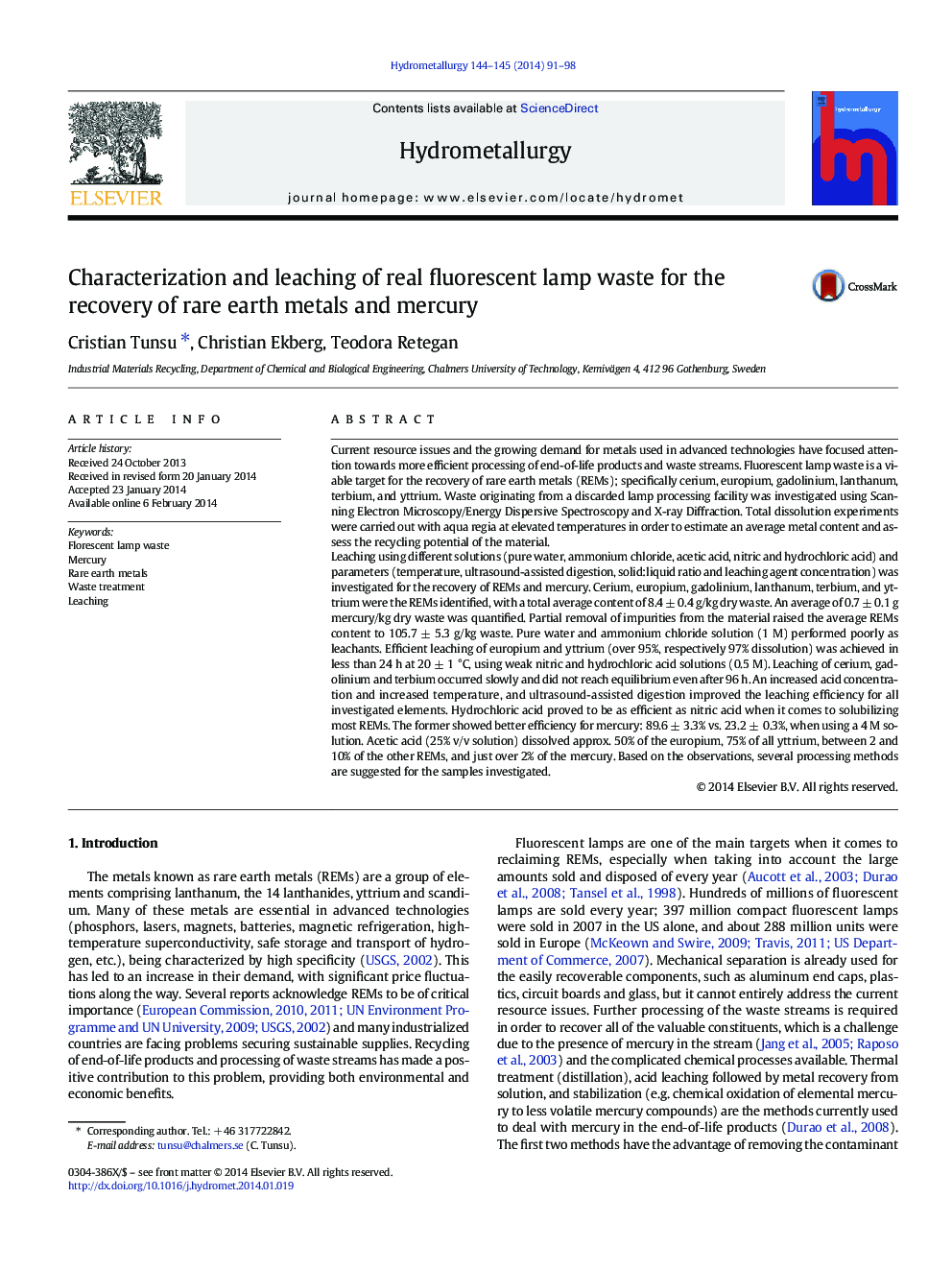| Article ID | Journal | Published Year | Pages | File Type |
|---|---|---|---|---|
| 212200 | Hydrometallurgy | 2014 | 8 Pages |
•The recycling potential of real fluorescent lamp waste is addressed.•Possible recovery scenarios for the REMs and mercury are discussed.•Low acid concentrations led to efficient leaching of europium and yttrium.•Selective leaching of europium and yttrium is possible to a certain degree.•Dissolution of metals increases with increased temperature and acid concentration.
Current resource issues and the growing demand for metals used in advanced technologies have focused attention towards more efficient processing of end-of-life products and waste streams. Fluorescent lamp waste is a viable target for the recovery of rare earth metals (REMs); specifically cerium, europium, gadolinium, lanthanum, terbium, and yttrium. Waste originating from a discarded lamp processing facility was investigated using Scanning Electron Microscopy/Energy Dispersive Spectroscopy and X-ray Diffraction. Total dissolution experiments were carried out with aqua regia at elevated temperatures in order to estimate an average metal content and assess the recycling potential of the material.Leaching using different solutions (pure water, ammonium chloride, acetic acid, nitric and hydrochloric acid) and parameters (temperature, ultrasound-assisted digestion, solid:liquid ratio and leaching agent concentration) was investigated for the recovery of REMs and mercury. Cerium, europium, gadolinium, lanthanum, terbium, and yttrium were the REMs identified, with a total average content of 8.4 ± 0.4 g/kg dry waste. An average of 0.7 ± 0.1 g mercury/kg dry waste was quantified. Partial removal of impurities from the material raised the average REMs content to 105.7 ± 5.3 g/kg waste. Pure water and ammonium chloride solution (1 M) performed poorly as leachants. Efficient leaching of europium and yttrium (over 95%, respectively 97% dissolution) was achieved in less than 24 h at 20 ± 1 °C, using weak nitric and hydrochloric acid solutions (0.5 M). Leaching of cerium, gadolinium and terbium occurred slowly and did not reach equilibrium even after 96 h. An increased acid concentration and increased temperature, and ultrasound-assisted digestion improved the leaching efficiency for all investigated elements. Hydrochloric acid proved to be as efficient as nitric acid when it comes to solubilizing most REMs. The former showed better efficiency for mercury: 89.6 ± 3.3% vs. 23.2 ± 0.3%, when using a 4 M solution. Acetic acid (25% v/v solution) dissolved approx. 50% of the europium, 75% of all yttrium, between 2 and 10% of the other REMs, and just over 2% of the mercury. Based on the observations, several processing methods are suggested for the samples investigated.
